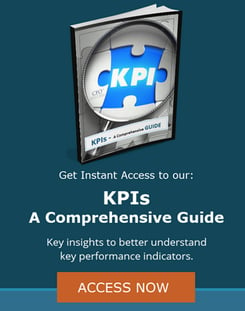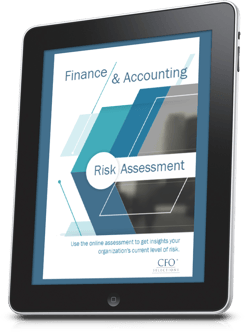 These days business owners looking to get an injection of cash into their companies have an almost endless list of possible funding options. However, that does not mean that all business funding options are created equal. They will vary by approval requirements, rates, conditions, payback terms, and other criteria. As a result, knowing the difference between funding types is meaningless without understanding what you hope to gain from securing financing.
These days business owners looking to get an injection of cash into their companies have an almost endless list of possible funding options. However, that does not mean that all business funding options are created equal. They will vary by approval requirements, rates, conditions, payback terms, and other criteria. As a result, knowing the difference between funding types is meaningless without understanding what you hope to gain from securing financing.
Before applying for funding or broaching financing conversations, it is important to create a strategic plan that details how you plan to grow the business, building off your existing business plan and using financial forecasts to establish short-term and long-term goals. This plan will not only serve as a roadmap to get your business where you want it to go, but also aid in financing requests because investors and lending organizations will want to see that you have a well-organized approach for growing the company. With your strategic growth plan in place, you can approach investors and lenders across a multitude of funding options.
Where should you start? These are the most common ways to fund a business:
Bootstrapping
The easiest way to fund your business is investing your own money through savings, personal loans, personal credit lines, or credit cards. This is called bootstrapping.
When you bootstrap a business, you do not have to give up any ownership or equity. For this reason, most small businesses start out as bootstrapped. However, for most people, there comes a point where you will no longer be able to use your own money to keep the business going. When this occurs, you will need to look elsewhere.
Bootstrapping typically contributes less cash than outside funding sources, making it less useful for companies that needed more significant funding to achieve their growth plan.
Friends/Family Financing
Relying on friends or family to finance your business is a flexible way to secure financing. Getting a loan from someone close to you may or may not come with equity or ownership stake conditions but will likely have advantageous payback terms. Although, you should always work with a lawyer to draw up a legal agreement to formalize the financing agreement to reduce the likelihood of animosity on either side later.
Like bootstrapping, getting cash from friends or family puts pressure on the business to generate forecasted revenue as quickly as possible. However, for business owners that plan to keep the company forever and pass it onto children or friends as part of their succession planning, this is an excellent financing option.
Crowdfunding
Crowdfunding platforms are commonplace now – with a whole host of options available for business owners looking to raise capital. Crowdfunding can be done in exchange for either equity or rewards. Equity involves giving away a portion of your business, while rewards involve giving away non-monetary items in exchange for cash. In addition to raising capital, crowdfunding can also be used as a form of marketing to build brand awareness.
The specific platform that you use will set forth the requirements for use and enumerate the fees incurred for doing so. It is incredibly important to understand these terms and conditions before soliciting contributions.
While some business industries may lend themselves well to crowdfunding, others may not have the “hook” needed to bring investors in en masse. For many businesses, approaching individual investors is a better option because it allows for a one-on-one pitch that can be tailored to their predilections.
Angel Investors
Angel investors are wealthy individuals that invest their own money in businesses in exchange for convertible debt. Their goal is to eventually turn this debt into equity in the company, which means they are only interested in financing businesses that are likely to be sold or make it the IPO stage. (Think of angel investors as “little venture capitalists.”)
If you plan to hold onto your company indefinitely or hand it down to a family member or business partner when you leave, angel investing is not going to be the right route for your financing needs.
Venture Capitalists
Like angel investors, VCs (Venture Capitalists) are wealthy people that invest their own money in promising startups or growing businesses with the aim of getting a high rate of return. As a result, VCs will not work with companies that are only growing modestly.
VCs typically invest much larger amounts than angel investors (sums in the millions rather than thousands), which makes them more discerning about the businesses that they bring into their portfolios.
If you plan on approaching VCs you will need strong financial leadership to put together the business financials and make a compelling case for investment. Some companies may even work with executive financial consultants to put together a pitch to use in front of investor audiences.
Short-Term Loan
Short-term loans offer capital quickly and are expected to be repaid quickly as well. Getting a short-term loan is a usually need-based decision, not part of a strategic plan.
Hard money loans are a type of short-term loans that have gained popularity recently. Private lenders offer hard money loans to borrowers that have real property (like a house) to secure the loan. Business owners can obtain hard money loans with a relatively high loan-to-value rate regardless of their credit rating if they have valuable collateral in the form of property, but they come with steep interest rates. As a result, they are meant to meet immediate short-term business needs.
Bridge loans are another type of short-term loan that provide capital right away for an immediate business need like inventory, working capital, or equipment replacement. These are meant to “bridge the gap” until more permanent funding can be secured. However, the business pays heftily for the convenience of getting money so quickly in the form of high rates.
Bank or Credit Union Loan
Bank loans are not a short-term financing option. They can be used strategically to bring affordable financing into the business in a way that fits the company’s growth plans.
The bank will set the terms of the loan – the payback period, interest rate, payment timing, and amount of the payments. Bank conditions can vary but each will require collateral to secure the loan, likely in the form of a personal guarantee from the owner, to ensure that the lender will be paid even if the business defaults on the loan. If you plan to take out a bank loan, it is worth it to shop around for the best rates and a repayment period that fits your needs.
SBA Loan
SBA-backed loans are a type of bank loan with tighter eligibility criteria. Small businesses can take advantage of SBA loans. The SBA works with participating banks nationwide to offer loans that are more accessible for startups and small businesses. If you think you may qualify for an SBA loan, your local Small Business Development Center has the resources you need to apply.
Credit Cards
With so many credit card options available it is easy to find cards with low interest rates. Business owners looking to get financing without having to go through bank loan applications can stack credit cards to equal the amount of funding they need to keep the business growing.
The goal here is to find multiple credit cards with the right combination of high-limits and low interest rates to use on the kind of business expenses that are meant to drive growth. These unsecured business credit lines still have an application process but, after they are obtained, business owners can use them for business growth expenses as they arise instead of needing to know what the funds will be used for ahead of time. The result is a more flexible funding option than a bank loan.
Online Term-Loan
Online loans look a lot like bank loans, except for their faster approval times and higher interest rates. Because online loans have less stringent requirements, the underwriting process goes faster than traditional bank loans (in some cases as quickly as a few days). However, these laxer conditions also make them riskier to the lending institution, which means that the lender charges higher rates. In the industry these tend to be seen as a backup funding option because the assumption is that better qualified individuals and companies are likely to be approved through more traditional channels.
Forgoing Funding Altogether
Remember, when your business needs money, you do not necessarily need to look externally. In some cases, improving your internal operations is enough to provide the funds to buy equipment, hire more staff, or do anything else needed to keep growing. When done correctly, cash flow management strategies can free up the capital needed to invest elsewhere in the business without compromising the day-to-day operations using strategies like:
- Invoicing customers quickly
- Changing pricing and payment terms
- Pursuing collections
- Using high-interest banking and cash back credit cards
- Delaying equipment purchases
- Outsourcing business activities
- Negotiating contracts with vendors
- Keeping timely and accurate financials
- Improving forecasting
An experienced financial leader can advise you on how best to approach your cash needs with respect to the overall health of the company. A Consulting CFO offers the unbiased opinion you need to make smart funding decisions. Contact us to find out more about how we can help keep your company on track to meet its goals!





